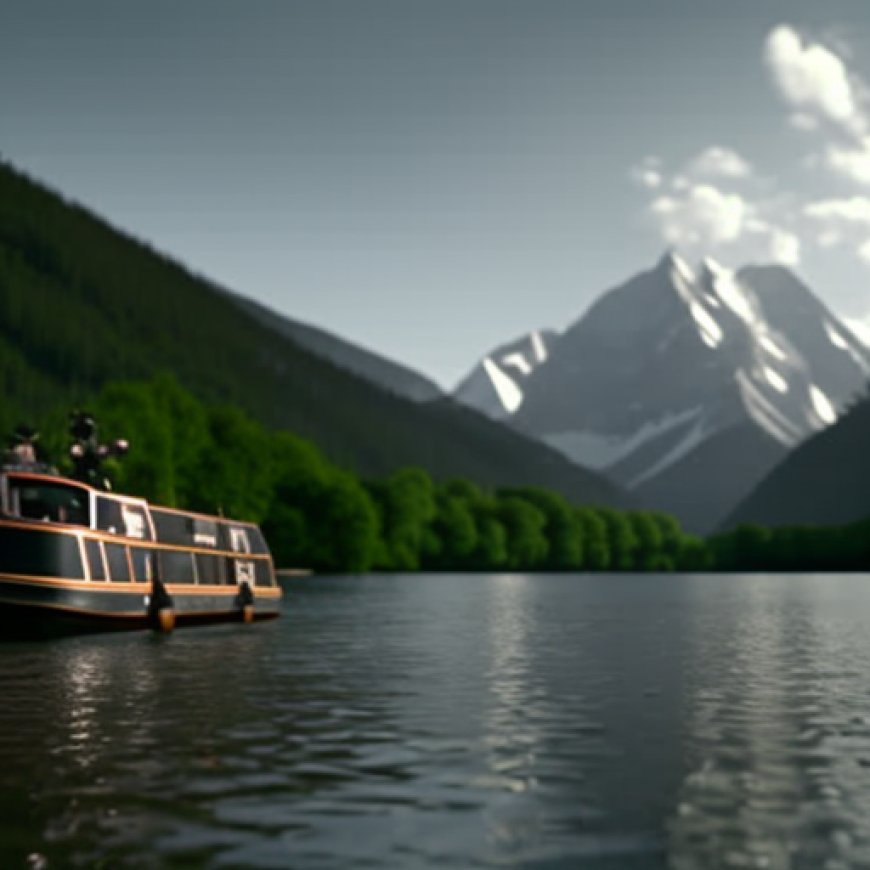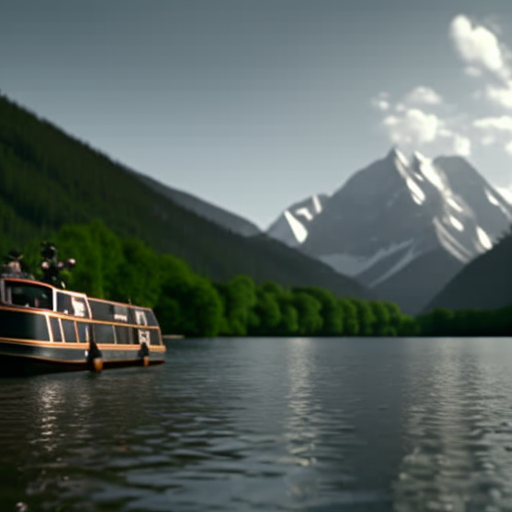The decline of large river animals and the ecosystems now in peril – Advanced Science News
The decline of large river animals and the ecosystems now in peril Advanced Science News


Ecosystem Architects
Freshwater megafauna are nature’s engineers, and as such, have a powerful influence on their surrounding environment.
“Freshwater megafauna can enhance disturbances on habitats through their movement and other activities such as feeding, building dams and nests, and excavating, which can increase habitat heterogeneity,” explained Fengzhi He, a professor at the Northeast Institute of Geography and Agroecology, Chinese Academy of Sciences and lead author of the study. “They interact with species in different [levels of the ecosystem] and have a strong influence on food webs. Hence, they could create and maintain diverse habitats and enhance trophic complexity, which in turn, promotes overall biodiversity.”
Beavers, for example, transform landscapes by constructing dams that create wetlands, which are crucial for numerous plants and animals. Similarly, the trails created by hippos in floodplains enhance water dispersal and local flow dynamics, shaping the aquatic landscape.
“The extirpation of freshwater megafauna often leads to the disappearance of habitats created and maintained by their activities,” explains He. “Many freshwater megafauna species are predators. Their prey size is often associated with their own body size. The loss of large predators directly influences their regulation effects on their prey and affects the complexity of food webs.”
All of these behaviors and interactions create a ripple effect that impacts the entire surrounding ecosystem.
The Impact of Their Decline
The decline of freshwater megafauna due to overexploitation, river fragmentation, habitat destruction, and pollution, to name but a few causes, has far-reaching consequences. Many megafauna are concentrated in areas such as the Amazon, Mekong, Congo, and Ganges basins, which are increasingly growing stressed from human activity.
The construction of human-made dams, specifically, has had major impacts on several fish species and their place in their aquatic habitats.
“Many sturgeons, salmonids, and large catfishes migrate long distances from the ocean or the lower river sections to upstream sections,” said He. “Due to construction of hydropower dams and other obstacles, the number of large migratory fish reaching their historical spawning areas in upstream sections has largely reduced. In many cases, large migratory fish are completely extirpated upstream from dams.”
This human interference has large consequences for nutrient cycling and overall ecosystem health as well. “The nutrient transport associated with their migrations is also disrupted, reducing the extent and magnitude of their impacts on upstream ecosystems” explained He.
Challenges to Conservation and Restoration
Some of the main challenges associated with conservation include the ongoing alteration of existing freshwater habitats, shifting baseline syndrome, and potential conflicts between humans and megafaunal species. “We need to maintain the connectivity of rivers that are critical movement corridors of migratory fish species,” He commented. “Otherwise, they may not be able to complete their life cycles and reproduce.”
“We should also ensure the effectiveness of protected areas on freshwater ecosystems. For example, many rivers are used to delineate protected area boundaries and are not considered in conservation plans. Freshwater habitats and species should be incorporated in conservation plans as specific targets” said He.
One of the greatest challenges and reasons why progress to protect these animals is slow is that megafauna often tend to compete with human expansion and resource collection, such as damage to human crops and fishing nets.
This is not even mentioning the physical danger they pose to local communities. Large animals such as hippos have been known to injure or even kill people due to territoriality, for example. Damage to fishing nets by crocodiles, river dolphins, and otters also happens. All of these behaviors create natural resistance to conservation efforts.
Future research must focus on what these populations looked like in the past in terms of their numbers, interactions with other species, and their strategies for living.
“[This] will improve our understanding of the magnitude and extent of ecological impacts of these large freshwater animals,” said He. “More investigations are needed to study the interactions between humans and freshwater megafauna. The results of these studies can guide the development of effective conservation and restoration strategies for freshwater biodiversity, which will also provide benefits for human well-being.”
Reintroduction programs and habitat restoration projects can also help reestablish populations and revive their ecological roles. Public awareness and involvement between scientists and local communities are key to the success of these initiatives.
Despite these obstacles, it is worth it to protect these magnificent creatures. There are challenges to conservation, but ultimately it can be done if we are equipped with sufficient knowledge and take targeted actions together with local people.
SDGs, Targets, and Indicators
-
SDG 14: Life Below Water
- Target 14.2: By 2020, sustainably manage and protect marine and coastal ecosystems to avoid significant adverse impacts, including by strengthening their resilience, and take action for their restoration in order to achieve healthy and productive oceans.
- Indicator 14.2.1: Proportion of national exclusive economic zones managed using ecosystem-based approaches.
- Indicator 14.2.2: Progress by countries in the degree of implementation of international instruments aiming to combat illegal, unreported, and unregulated fishing.
-
SDG 15: Life on Land
- Target 15.1: By 2020, ensure the conservation, restoration, and sustainable use of terrestrial and inland freshwater ecosystems and their services, in particular forests, wetlands, mountains, and drylands, in line with obligations under international agreements.
- Indicator 15.1.1: Forest area as a proportion of total land area.
- Indicator 15.1.2: Proportion of important sites for terrestrial and freshwater biodiversity that are covered by protected areas, by ecosystem type.
Table: SDGs, Targets, and Indicators
| SDGs | Targets | Indicators |
|---|---|---|
| SDG 14: Life Below Water | Target 14.2: By 2020, sustainably manage and protect marine and coastal ecosystems to avoid significant adverse impacts, including by strengthening their resilience, and take action for their restoration in order to achieve healthy and productive oceans. | Indicator 14.2.1: Proportion of national exclusive economic zones managed using ecosystem-based approaches. Indicator 14.2.2: Progress by countries in the degree of implementation of international instruments aiming to combat illegal, unreported, and unregulated fishing. |
| SDG 15: Life on Land | Target 15.1: By 2020, ensure the conservation, restoration, and sustainable use of terrestrial and inland freshwater ecosystems and their services, in particular forests, wetlands, mountains, and drylands, in line with obligations under international agreements. | Indicator 15.1.1: Forest area as a proportion of total land area. Indicator 15.1.2: Proportion of important sites for terrestrial and freshwater biodiversity that are covered by protected areas, by ecosystem type. |
Analysis
1. Which SDGs are addressed or connected to the issues highlighted in the article?
The issues highlighted in the article are connected to SDG 14: Life Below Water and SDG 15: Life on Land.
2. What specific targets under those SDGs can be identified based on the article’s content?
Based on the article’s content, the specific targets that can be identified are:
– Target 14.2: By 2020, sustainably manage and protect marine and coastal ecosystems to avoid significant adverse impacts, including by strengthening their resilience, and take action for their restoration in order to achieve healthy and productive oceans.
– Target 15.1: By 2020, ensure the conservation, restoration, and sustainable use of terrestrial and inland freshwater ecosystems and their services, in particular forests, wetlands, mountains, and drylands, in line with obligations under international agreements.
3. Are there any indicators mentioned or implied in the article that can be used to measure progress towards the identified targets?
Yes, there are indicators mentioned or implied in the article that can be used to measure progress towards the identified targets:
– Indicator 14.2.1: Proportion of national exclusive economic zones managed using ecosystem-based approaches.
– Indicator 14.2.2: Progress by countries in the degree of implementation of international instruments aiming to combat illegal, unreported, and unregulated fishing.
– Indicator 15.1.1: Forest area as a proportion of total land area.
– Indicator 15.1.2: Proportion of important sites for terrestrial and freshwater biodiversity that are covered by protected areas, by ecosystem type.
These indicators can be used to track the management and protection of marine and coastal ecosystems, the implementation of measures to combat illegal fishing, the conservation of forest areas, and the coverage of protected areas for biodiversity.
4. Table: SDGs, Targets, and Indicators
| SDGs | Targets | Indicators |
|---|---|---|
| SDG 14: Life Below Water | Target 14.2: By 2020, sustainably manage and protect marine and coastal ecosystems to avoid significant adverse impacts, including by strengthening their resilience, and take action for their restoration in order to achieve healthy and productive oceans. | Indicator 14.2.1: Proportion of national exclusive economic zones managed using ecosystem-based approaches. Indicator 14.2.2: Progress by countries in the degree of implementation of international instruments aiming to combat illegal, unreported, and unregulated fishing. |
| SDG 15: Life on Land | Target 15.1: By 2020, ensure the conservation, restoration, and sustainable use of terrestrial and inland freshwater ecosystems and their services, in particular forests, wetlands, mountains, and drylands, in line with obligations under international agreements. | Indicator 15.1.1: Forest area as a proportion of total land area. Indicator 15.1.2: Proportion of important sites for terrestrial and freshwater biodiversity that are covered by protected areas, by ecosystem type. |
Behold! This splendid article springs forth from the wellspring of knowledge, shaped by a wondrous proprietary AI technology that delved into a vast ocean of data, illuminating the path towards the Sustainable Development Goals. Remember that all rights are reserved by SDG Investors LLC, empowering us to champion progress together.
Source: advancedsciencenews.com

Join us, as fellow seekers of change, on a transformative journey at https://sdgtalks.ai/welcome, where you can become a member and actively contribute to shaping a brighter future.







